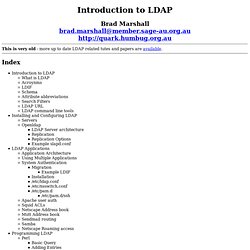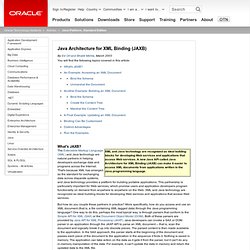

Introduction to Spring's Aspect Oriented Programming(AOP) Aspect Oriented Programming with Spring AOP. Aspect Oriented Programming (AOP) refers to the programming paradigm which isolates secondary or supporting functions from the main program’s business logic.

AOP is a promising technology for separating crosscutting concerns, something usually hard to do in object-oriented programming. The application’s modularity is increased in that way and its maintenance becomes significantly easier. The most prominent example of a crosscutting concern is logging. Logging is used mainly for debugging and troubleshooting issues mainly by tracing method calls and overall execution flow. It qualifies as a crosscutting concern because a logging strategy necessarily affects every logged part of the system.
Note that AOP and OOP are not exclusive. AOP’s usage and adoption was boosted with the help of our favorite Spring framework. (NOTE: The original post has been slightly edited to improve readability) Let us consider a BookStore application which provides web access to a book store. Spring Autowiring, Spring Autowire Tutorial. Spring Autowiring, Spring Autowire TutorialPosted on: August 25, 2010 at 12:00 AM In this example you will learn about autowiring in spring framework.

Spring have many collaborating bean, the autowire help in making the relationship between them. Autowiring reduces the effort of writing properties or constructor arguments. The autowiring in specified at the autowire attribute inside <bean/> element. The functionality of autowiring seen in five mode. You will see example step by step on all different mode defined above.
Lets see an example of no autowiring mode which is the default mode. Student.java College.java AutowireMain.java context.xml When you run this application it will display output as shown below: What is Velocity? JUnit. Copyright © 2007, 2008, 2009, 2010, 2011, 2012 Lars Vogel Unit testing with JUnit This tutorial explains unit testing with JUnit 4.x. It explains the creation of JUnit tests and how to run them in Eclipse or via own code. This tutorial is part of this Kindle book: 1. 1.1. A unit test is a piece of code written by a developer that executes a specific functionality in the code which is tested. Unit tests ensure that code works as intended. Typically unit tests are created in their own project or their own source folder to avoid that the normal code and the test code is mixed. 1.2. Writing First Hibernate Code. JBoss Drools Tutorial. JBoss Drools Tutorial Details Published: 26 August 2008 Introduction tutorial to JBoss Drools.

Today most enterprise Java applications can be split into three parts: the front-end interface to the user, the service layer which is connected to Enterprise information systems and the business layer. In the last years we've seen a growing number of framework which handle both the front-end and the service layer (Struts, Spring, Hibernate, Enterprise Java Bean, JDO just to mention a few). What is a Rule Engine ? The term Rule Engine can be referred to any system that uses rules, in any form, that can be applied to data to produce outcomes; it may refer to simple systems like form validation or more complex systems like dynamic expression engines. Why using a Rule Engine ? Rule systems are capable of solving very, very hard problems, providing an explanation of how the solution was arrived at and why each "decision" along the way was made.
Logic and Data Separation. Global Leader in Open Source Middleware Software. LDAP Tutorial. $ ldapsearch -L -D 'cn=foo,dc=bar,dc=com' 'objectclass=posixAccount' Servers Slapd University of Michigan Openldap Netscape Directory Server Microsoft Active Directory (AD) Novell Directory Services (NDS) Sun Directory Services (SDS) Lucent's Internet Directory Server (IDS) Openldap LDAP Server architecture LDAP daemon called slapd Choice of databases LDBM - high performance disk based db SHELL - db interface to unix commands PASSWORD - simple password file db SQL - mapping sql to ldap (in OpenLDAP 2.x) Multiple database instances Access control Threaded Replication LDAP Architecture Replication daemon called slurpd Frees slapd from worrying about hosts being down etc Communicates with slapd through text file Replication Architecture Replication Replication Options.

Java Architecture for XML Binding (JAXB) You will find the following topics covered in this article: What's JAXB?

The Extensible Markup Language (XML) and Java technology are natural partners in helping developers exchange data and programs across the Internet. That's because XML has emerged as the standard for exchanging data across disparate systems, and Java technology provides a platform for building portable applications. This partnership is particularly important for Web services, which promise users and application developers program functionality on demand from anywhere to anywhere on the Web. XML and Java technology are recognized as ideal building blocks for developing Web services and applications that access Web services. What is Maven? Introduction Maven, a Yiddish word meaning accumulator of knowledge, was originally started as an attempt to simplify the build processes in the Jakarta Turbine project. There were several projects each with their own Ant build files that were all slightly different and JARs were checked into CVS. We wanted a standard way to build the projects, a clear definition of what the project consisted of, an easy way to publish project information and a way to share JARs across several projects.
The result is a tool that can now be used for building and managing any Java-based project. We hope that we have created something that will make the day-to-day work of Java developers easier and generally help with the comprehension of any Java-based project. Maven's Objectives Maven's primary goal is to allow a developer to comprehend the complete state of a development effort in the shortest period of time. Making the build process easy.